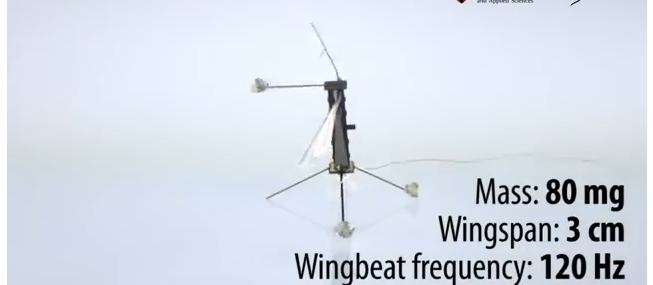At Harvard, created a miniature robot mosquito (+ video)

The miniaturization of robotic systems in our time is reaching new frontiers, so to speak. At Harvard, for example, created a miniature robot, very similar in appearance to a mosquito, whose weight is only 80 mg. At the same time, the robot independently flies with the help of wings, driven by “muscles”, which allow the wings to work very quickly.
The “muscles” of the robot are able to contract 120 times per second, which leads to the corresponding speed of the wings. Only living systems have demonstrated such a frequency of sweeps so far, but now also robotic systems can repeat the success of their biological “brothers”. The authors of the project claim that in a minute of flight the robot makes about 7,200 flaps of its wings. As far as can be understood from the explanation, all this works due to the piezoelectric "motor", driven by current discharges.
')
Wings can work both synchronously and independently from each other.
According to the developers, this robot, in addition to everything, is also equipped with an obstacle detection system, which allows the device not to crash into walls / boards and other objects. Moreover, the system even recognizes dynamic obstacles, so to speak, including suddenly falling things, or, for example, the hand of a person intent on nailing this "mosquito." Of course, the robot is kept in space not by itself, but thanks to another system, this time, stabilization.
The creators of this robot believe that the mechanical "mosquito" is able to scout blockages, for example, or to monitor environmental quality (air quality analysis, etc.). About intelligence and military purposes, of course, no one talks. Probably, this is so clear to everyone.
Source: https://habr.com/ru/post/178645/
All Articles